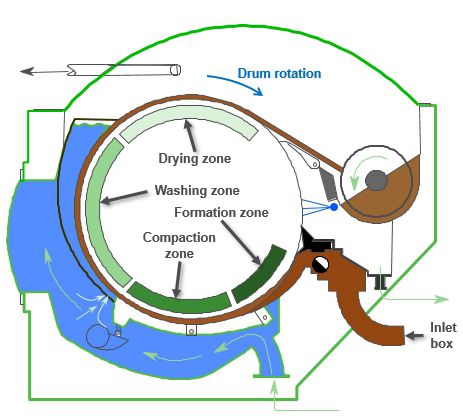Operational basics of Compaction Baffle Filters (webinar)
Aug 17, 2021
Pulp producers in North America were introduced to the Compaction Baffle (CB) Filter nearly forty years ago, and many mills still use this pressure washing technology today. Much can change in the mill over such a long period of time, including the on-site personnel charged with operating and maintaining the equipment. For mills with low pressure pulp washing applications, understanding the fundamentals of CB Filter operations can help fill the knowledge gap and have a positive impact on fiber processing efficiency and reliability.
On August 25th, 2021, Frank Merchel, Product Manager for Pulp, Energy, Fiber Processing, Product and Aftermarket services presented a webinar about the Compaction Baffle Filter process.
Click HERE to watch this webinar.
By viewing this webinar you can expect to:
- Gain insight into the general operating philosophy behind the Compaction Baffle Filter
- Understand the key differences between CB Filter and Vacuum Washer technologies
- Identify the components and functions that are crucial for efficient equipment operation
- Discover CB Filter improvement opportunities to maximize pulp washing performance
An example of what you will learn in the webinar is below...
The production of chemical pulps requires several unit operations involving washing dissolved solids from the pulp. Several washing stages in a countercurrent series recover cooking chemicals in the brownstock or redstock washing systems, while bleach washers remove residual chemicals and adjust pH between bleaching stages. Washing of dissolved solids can be accomplished either by dilution/extraction or by displacement. The Compaction Baffle Filter delivers a combination of the two operations in one machine. This is important because the dilution/extraction step helps to release dissolved solids trapped within the fibers, allowing the displacement step to remove this material from within the pulp matrix.
Comparison of vacuum and compaction baffle filter washing methods
| Vacuum filter | Compaction baffle filter |
| High level | Low level |
| Low feed consistency (1-2%) | Medium feed consistency (3-4%) |
| Large tank/pump volume | Smaller tank/pump volume |
| Drainage driving force: vacuum | Drainage driving force: pressure |
| Open / Atmospheric | Totally encloses / pressurized |
| Specific load 1.0 odtpd/ft2 | Specific load 2.4 odtpd/ft2 |
| Drum nominal speed ~2.0 rpm | Drum nominal speed ~8.0 rpm |
The Compaction Baffle Filter in the wash cycle
The main reason for maintaining proper feed consistency is to achieve a uniform pulp mat on the cylinder. The optimum feed consistency for the CB Filter is 3.0-4.0 percent Oven Dried (OD) for softwood pulps. Feed consistencies within range provide for an even distribution of pulp. Feed consistencies above this range will cause pulp to clump on the washer face and cause a decrease in washing efficiency.

Cross section of the compaction baffle filter pulp washing process
The degree of flocculation of the pulp increases as the feed consistency increases. The fundamental principals of good washing requires that each fiber must receive its share of the wash liquor. Therefore, an even basis weight sheet across the entire length of the washer must be achieved. If the sheet is poorly formed from flocs and clumps of fiber bundles, then the wash liquor will channel around the flocs and leave the fibers within the flocs unwashed.
Good sheet formation is a pulp mat of uniform thickness across the entire face of the drum. Basis weight is the weight of pulp per square meter of drum surface. An uneven or lumpy sheet will result in unevenly distributed wash water and poor washing efficiency. The inlet box of the CB Filter plays an important part in optimum sheet formation, because it is designed to correct unequal flow patterns.
To learn more about the proper operation of a Compaction Baffle Filter to improve the pulp washing process, watch the webinar and contact your Valmet representative.
